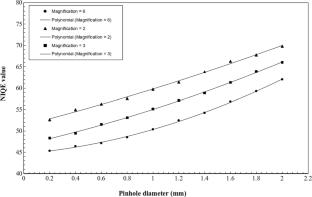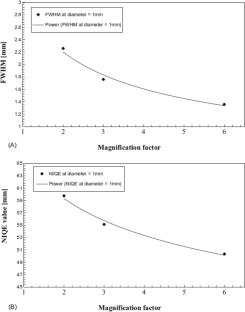Monte Carlo evaluation of the spatial resolution and image quality in gamma cameras utilising lutetium–yttrium oxyorthosilicate scintillation detectors
Abstract
Scintillator materials are widely used in industrial and medical imaging systems that utilise gamma cameras. This study evaluates image quality by modelling a gamma camera system with a pinhole collimator and a new scintillation detector (lutetium–yttrium oxyorthosilicate (LYSO)). This addition aims to improve the spatial resolution of the imaging system. The system is modelled using the Geant4 application for tomographic emission (GATE 9.1) tools. The pinhole collimator geometry was designed with various diameters and system magnification factors. Spatial resolution is assessed using two parameters: the full-width at half-maximum (FWHM) and the no-reference natural image quality evaluator (NIQE). Results show that both FWHM and NIQE values increase as the diameter of the pinhole collimator increases. Additionally, higher magnification factors improve spatial resolution and NIQE at the same pinhole diameter. The best FWHM value achieved is 0.66 ± 1.4 × 10−3 mm with a LYSO scintillation detector. These findings suggest that a gamma camera system equipped with a LYSO scintillation detector and a pinhole collimator has strong potential for high-resolution imaging applications.



 求助内容:
求助内容: 应助结果提醒方式:
应助结果提醒方式:


